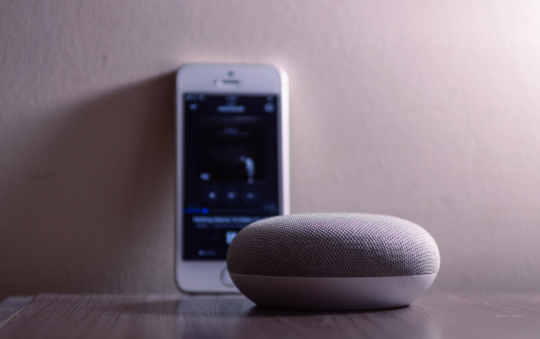If reports and studies are accurate, a significant percentage of wireless LANs (especially those used in homes) are still using outdated and insecure WEP for their encryption.
by Joseph Moran
Back when the first consumer WLAN hardware hit the streets more than six years ago, they came with a technology called WEP, or Wired Equivalent Privacy.
WEP was designed to protect a wireless network from eavesdropping, but it soon became apparent that due to myriad flaws, WEP’s privacy was not at all equivalent to that of a wired network. Therefore, it wasn’t long (though at the time it seemed like forever) before a new technology called WPA — Wi-Fi Protected Access — debuted to address many of WEP’s shortcomings.
WPA has been a mainstream technology for years now, but WEP remains a standard feature on virtually every wireless router on store shelves today. Although it’s mainly there for backward compatibility with the oldest hardware, if reports and studies are accurate, a significant percentage of WLANs operating today (especially those used in homes) are still using outdated and insecure WEP for their encryption.
Widespread use of WEP is almost understandable given that to the layperson, the similar abbreviations WEP and WPA don’t convey any meaningful difference between the two security methods (and they may even imply equivalence) Plus, WEP is almost always presented first by the security interface of most broadband routers since WEP comes before WPA both historically and alphabetically).
This week we’ll take a look at why you shouldn’t be using WEP anymore, and why WPA is a better choice.
WEP — The Weak Encryption Protocol
WEP’s major weakness is its use of static encryption keys. When you set up a router with a WEP encryption key, that one key is used by every device on your network to encrypt every packet that’s transmitted. But the fact that packets are encrypted doesn’t prevent them from being intercepted, and due to some esoteric technical flaws it’s entirely possible for an eavesdropper to intercept enough WEP-encrypted packets to eventually deduce what the key is.
This problem used to be something you could mitigate by periodically changing the WEP key (which is why routers generally allow you to store up to four keys). But few bother to do this because changing WEP keys is inconvenient and time-consuming — it has to be done not just on the router, but on every device that connects to it. As a result, most people just set up a single key and then continue using it ad infinitum.
A recent development reinforces how even changing WEP keys frequently is no longer sufficient to protect a WLAN. The process of “cracking” a WEP key used to require that a malicious hacker intercept millions of packets plus a fair amount of time and computing power.
But technology moves fast, and that’s no longer the case. In fact, researchers in the computer science department of a German university recently demonstrated the capability to compromise a WEP-protected network very quickly. After spending less than a minute intercepting data (fewer than 100,000 packets in all) they were able to compromise a WEP key in just three seconds, and they did it using a system equipped with a mere 1.7 GHz Pentium M CPU, which is less powerful than the processor found in today’s entry-level notebooks.
Of course, none of this means that there’s necessarily someone lurking outside your window with the capability or desire to hack your wireless network in the blink of an eye. But given that it can be broken increasingly easily with commonly available equipment and software, why continue to use WEP when WPA is a more secure and easy to use alternative?
Switch to WPA
Even if your router is several years old, it almost certainly supports some form of WPA (and if it doesn’t, upgrading to the latest firmware may fix that). The easiest-to-use and most widely supported version is WPA Personal, sometimes referred to as WPA Pre-Shared Key (PSK).
To encrypt a network with WPA Personal/PSK you provide your router not with an encryption key, but rather with a plain-English passphrase between 8 and 63 characters long. Using a technology called TKIP (for Temporal Key Integrity Protocol), that passphrase, along with the network SSID, is used to generate unique encryption keys for each wireless client. And those encryption keys are constantly changed. (Although WEP also supports passphrases, it does so only as a way to more easily create static keys, which are usually comprised of the hex characters 0-9 and A-F).
Unfortunately, there are still wireless devices being sold today — mostly of the consumer electronics variety — that don’t support WPA. Frankly, you should avoid buying any wireless device that does WPA. When it comes to regular PCs, WPA is supported by both Windows XP with Service Pack 2 and Mac OS X (as well as Windows Vista, naturally). In XP you won’t find WPA options in the Data encryption drop-down menu found within the properties sheet for a wireless network connection. Look for it instead under Network Authentication, and then make sure that the choice you make for Data encryption — TKIP or AES — matches what your router is set for. (Many routers support AES, which offers stronger encryption that the kind used by TKIP.)
Properly configured, WPA offers you infinitely better protection than WEP, but this isn’t to say that WPA security is iron-clad, because let’s face it, what form of security really is? With that in mind, avoiding dictionary words in both the SSID and WPA passphrase (and having as long a passphrase as possible) will provide a lot better protection than using “linksys” and your dog’s name. (For an excellent technical treatment outlining some methods for cracking WPA, check this article out.)
If your router or its firmware is of relatively recent vintage (within the last 18-24 months), it may support WPA2, which provides further improvements over WPA, including using AES encryption by default. In order to use WPA2 on an XP system, however, you may need to download the update located here.
Joe Moran is a regular contributor to PracticallyNetworked.




